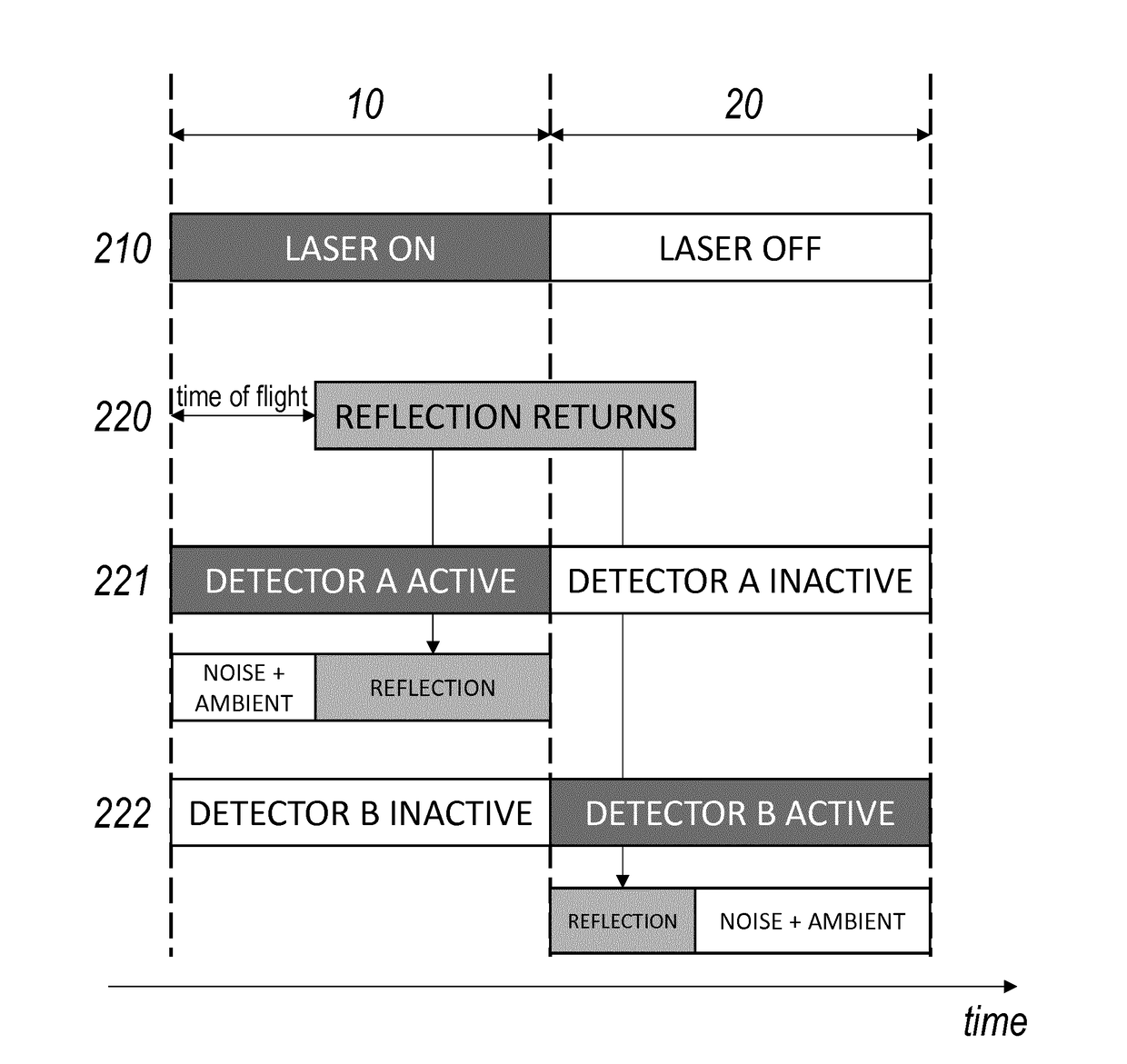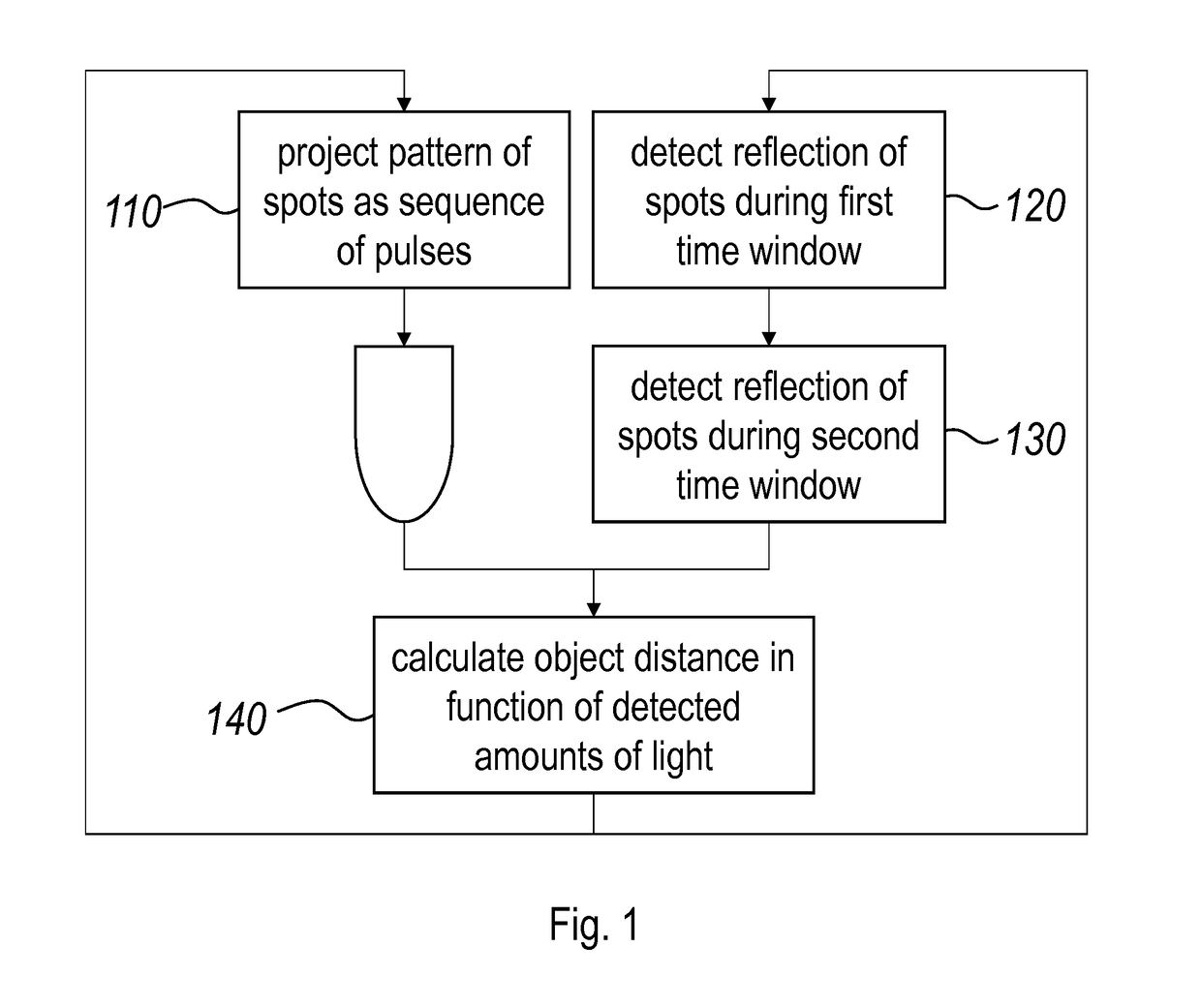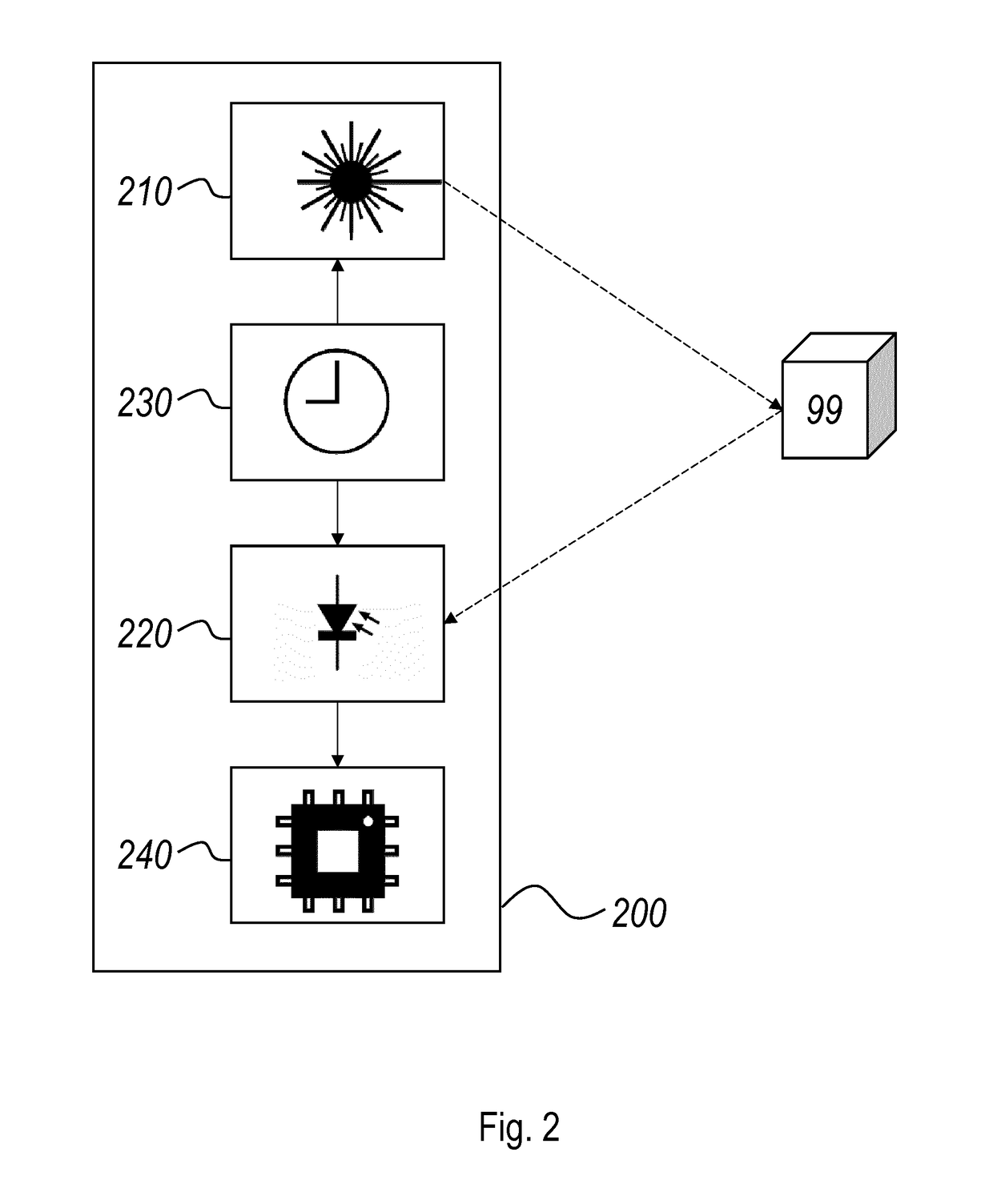System and method for determining a distance to an object
a distance and object technology, applied in the field of systems for determining distances to objects, can solve the problems of limiting the prospect of miniaturization, reliability, and cost reduction of this type of system, and the attainable range of detection is very limited, so as to reduce the noise of readout, improve the signal-to-noise ratio, and reduce the effect of ambient light in the distance calculation formula
- Summary
- Abstract
- Description
- Claims
- Application Information
AI Technical Summary
Benefits of technology
Problems solved by technology
Method used
Image
Examples
Embodiment Construction
[0048]The surround sensing systems of the type disclosed in international patent application publication WO 2015 / 004213 A1, in the name of the present applicant, has the advantage of observing an extensive scene while illuminating that scene simultaneously or partially simultaneously only in a number of discrete and well-defined spots, in particular a predefined spot pattern. By using VCSEL lasers with an outstanding bundle quality and a very narrow output spectrum, it is possible to obtain a detection range with a limited amount of output power, even in the presence of daylight. The actual ranging performed in the system of WO 2015 / 004213 A1 relies on displacement detection, in particular triangulation, which was understood to be the only method practically available in the context of the long (quasi-stationary) pulse durations that were necessary in view of the power budget. To date, it had not been possible to achieve the same power / performance characteristics with a compact, sem...
PUM
 Login to View More
Login to View More Abstract
Description
Claims
Application Information
 Login to View More
Login to View More - R&D
- Intellectual Property
- Life Sciences
- Materials
- Tech Scout
- Unparalleled Data Quality
- Higher Quality Content
- 60% Fewer Hallucinations
Browse by: Latest US Patents, China's latest patents, Technical Efficacy Thesaurus, Application Domain, Technology Topic, Popular Technical Reports.
© 2025 PatSnap. All rights reserved.Legal|Privacy policy|Modern Slavery Act Transparency Statement|Sitemap|About US| Contact US: help@patsnap.com



